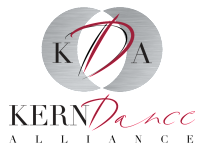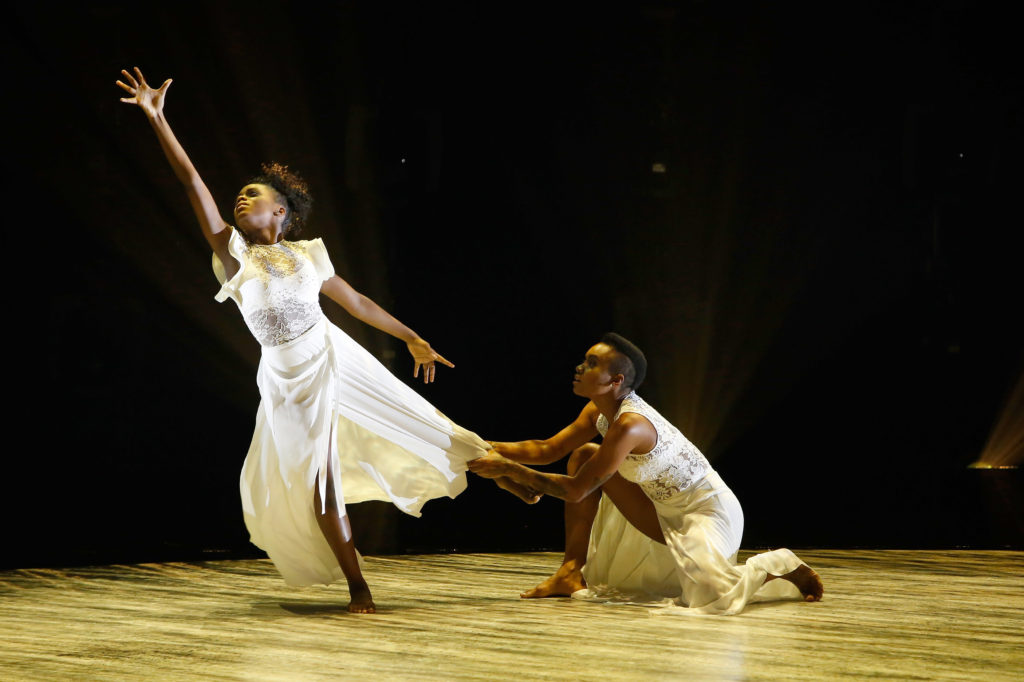NEWSLETTER — September 2016
- FEATURE STORY
- THE NUTRITION SOLUTION
- FIVE-MINUTE MENTOR
- THE WORKING DANCER
- KDA PROGRAMMING + UPCOMING EVENTS
- KDA 'HOW TO'
Co-Authored: Kyli Davis + Andrea Hansen
It’s been a breathless summer for the Bakersfield dance community. The high temperatures have heated up studios across the valley while Jordan Wandick, competing in “So You Think You Can Dance: The Next Generation” has lit the small screen on fire with her powerful, charismatic dancing. On June 27th Jordan became a top ten finalist in the popular Fox TV series, and each week she wowed viewers with her dancing. KDA supporter and SYTYCD season 8 runner-up, Sasha Mallory chose to be Jordan’s mentor and together they delivered a performance to ‘Amazing Grace’ that prompted the following response from Entertainment Weekly writer Kelly Connolly: “Wow. It’s like the whole show stopped to breathe at once.”
Jordan began her dance journey at the age of nine in a jazz class at Dancers Turnout Academy. Ambitious and energetic, Jordan was soon recruited for the competition team. She quickly excelled taking as many classes as she could, even going home and practicing regularly. A passion for dance accelerated a proliferation in her technique and her devotion to dance soon included additional responsibilities, including assisting DTA teachers in various dance technique classes.
This past January, Jordan was not only recognized for her dance talent, but also her academic achievements as one of two KDA scholarship recipients. A 4.0 student, a featured dancer in Debbie Allen’s “The Hot Chocolate Nutcracker”, and a shining example of leadership and humility led the KDA Board of Directors to unanimously approve her scholarship application.
Jordan was eliminated from the competition on August 2nd, but it is safe to say that SYTYCD is only the beginning for the young dancer. Jordan’s future plans are clear. “My dream is to dance on Broadway,” she told KDA. “I want to see my name in lights and I can’t do that without dance.”

To perform at optimal levels, dancers need to be well fueled for classes, rehearsals, and performances. Carbohydrates are a major energy source in muscles. An ingested carbohydrate is broken down into simple sugars (glucose) in the digestive tract then stored in muscle in the form of glycogen, the primary fuel for energy production. Dancers who do not ingest sufficient carbohydrates will compromise their ability to train because of low muscle glycogen levels. They may feel more fatigued during classes and rehearsals.
Dancers should favor complex carbohydrates derived from whole wheat bread, oats, quinoa, legumes, vegetables, fruit, and low-fat dairy rather than simple carbohydrates, such as candy, cake, ice cream, pastries, sodas because complex carbohydrate are nutrient dense with many micronutrients while simple sugars are nutrient poor.
Here is a complex carbohydrate recipe that is low in fat and will surely give you energy!
The Whatta-Burger (meat-less burger)
Burgers:
3 ½ C Water
½ C Nama Shoyu (soy sauce)
4 ½ C Oats –uncooked
1 Onion large – chopped
1 C Sunflower Seeds – chopped
1 Tsp. Italian Seasoning
2 Tbs. Nutritional Yeast
½ Tsp. Garlic Powder
2 Tbs. Olive Oil
Directions:
- Preheat oven to 350 degrees
- Mix water and Nama Shoyu together in large mixing bowl.
- Add oats and sunflower seeds. Stir until moist
- In a skillet, sauté onions in olive oil until tender, then add oats and seasonings.
- Take off heat and let stand until liquid is absorbed, about 10 minutes.
- Form into patties by hand or use a burger patty ring.
- Place on a baking sheet that has been sprayed with nonstick vegetable spray.
- Bake for 20 minutes on each side or until browned.
Serves 10
Comments:
Of course you can eat these with hamburger buns like the traditional hamburger. I also like to plate just the patty, add mustard, mayonnaise, shredded lettuce, chopped onions and chopped pickles on top, and then eat them with a fork as the entrée. This is a gluten free recipe.
by Amy Adams
Are you struggling with a particular aspect of performing? Whether you feel stuck by a major roadblock or just want a new perspective on an old problem, this regular column offers advice from a fellow performer who has been there before.
When I am in dance class or alone, I love to dance, but once I am aware that people are watching me I mess up so much that dancing becomes frustrating. Aren’t performers supposed to love being watched? Is it weird to be shy and be a dancer? How do I become more comfortable in front of people?
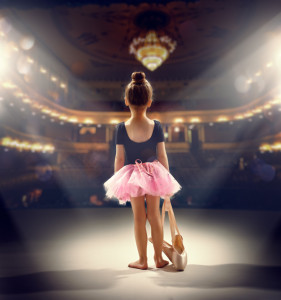
Not all performers are extroverts. Focus on the love of what you do rather than the people watching.
Believe it or not, not all performers love to be watched. The interesting thing about being a gifted performer is that it can truly be within anyone, extroverts and introverts alike. The most important thing to remember is that the second you get inside of your own head and make yourself aware that people are watching you will have a tendency to second guess your perceived ability and begin to focus on the “what ifs” people may be thinking. Be as present as you can be in the moment, and always focus on what you love about dance, for me it is the the flow of movement that makes me forget that I am actually counting in my head, the moment you can just let go you can feel that love, tap into that. Also, one of the greatest gifts you can give yourself is confidence in your ability, if that confidence waivers make sure you are continually educating yourself. The more prepared you are the more empowered you are so that you can truly dance like nobody is watching.
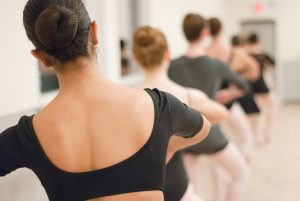
Whether you are a seasoned professional or just starting out, it is important to practice good dance class etiquette. Not only is class etiquette important to cultivate the best possible class experience for you and your fellow dancers, but it can also be extraordinarily impressive to your instructors who, more often than not, play a large role in deciding the future of your career. It is especially important for young studio dancers as they move on to collegiate and professional studios and take more master classes to be educated about and practice proper dance class etiquette because it will separate you from the rest. You will appear professional, mature, and humble and directors and choreographers will want to work with you again and again because you make their job easy and rewarding. Some of these rules may be obvious to you, but some are “etiquette crimes” still committed by experienced dancers! Practice the following 10 guidelines, and you’ll always impress in class.
Arrive On Time. Always arrive with enough time to be fully prepared to begin class without distraction. If you do happen to arrive late, enter the studio quietly as possible and wait until the end of class to apologize. You may even want to wait for permission from the instructor to come on to the floor. The key is not to disrupt the class any further. Try not to “come and go” during class either. Once in class, stay in class for its entirety. In addition, never leave early. If there is an emergency and you must, discuss this with your instructor before class and leave as discreetly as possible.
Observe Studio Floor Rules. Different studios may have different rules regarding their floor, but there some general guidelines on what is appropriate treatment of studio floors. Wear only approved foot wear on the floor. Help protect our precious dance floors by never wearing your street shoes inside the studio and never wearing your dance shoes outside the studio. Socks are traditionally not appropriate for dance class but have recently been a footwear trend in class and performance. Socks can allow for more stamina on sometimes, sticky marley floors or aesthetics and increased technical capability in choreography. However, some floors may be too slippery for socks and some instructors may find it too informal. If you’re in doubt about whether socks are appropriate for class, ask your instructor about appropriate foot wear.
Bring Only the Necessities Into the Studio. The necessities should not include your phone. If you must have your cell phone, use it wisely and make sure it is completely silent, even vibration settings can be a distraction. Always ask instructor permission before pulling out your phone to film or take photos of any part of class, especially if you plan to post the instructor’s choreography in any public capacity.
Come to Class “Clean.” Come to class in proper dance attire, free of any jewelry. This allows the instructor to easily spot corrections in your technique and you to dance fully without worrying about your safety or the safety of the other dancers. Never chew gum during class or bring food into the studio. Water should be your only necessity. Always come to class having practiced good personal hygiene. Not only will your instructor and fellow dancers thank you, but you will feel better and dance better as a result!
Give the Instructor Your Full Attention. Never sit down in the middle of class. Avoid negative body language such as crossed arms, leaning on the barre, or yawning. These behaviors will make you appear bored, thus the instructor will think you’re uninterested in class. Give the instructor your undivided attention, never talking while they’re speaking, not even quietly to your neighbor. Most importantly, listen first, then ask questions. The instructor should never have to repeat themselves because you weren’t listening. Ask questions that are relevant to class and the current combination being taught. If you find yourself with more than 1-2 questions about a particular subject or combination, consider saving them for after class so not to delay or disrupt the flow of class.
Never “Mark” a Combination. Unless the instructor has otherwise specified, always dance to your fullest ability. To not do so is a waste of your dance instructor’s time and implies that you do not care. Use your time on the floor and in front of your instructor wisely. Your technique will only improve and your instructor will notice!
Be Attentive. When performing across-the-floor or center combinations, be prepared when it is your turn. Especially if your instructor has given the class explicit instructions on when each dancer or group should begin, he/she should not have to “count you in.” For example, if an across-the-floor combination is four 8-counts, the next dancer or group should be ready to on the fifth! Your instructor will be thankful for this display of professionalism. In addition, never quit early or pause in the middle of the floor because there is a dancer coming right behind you! Do your best to keep going if you make a mistake to avoid collisions or other dancer’s ability to complete the combination.
Practice Your Spatial Awareness. Be aware of the personal space of your instructor and fellow dancers. Never crowd the front (or back) of the studio floor or your instructor. Be confident and do not be afraid to stand where you can best see, hear, and learn, but try to only stand in front if you really know the combination.
Let the Instructor Do the Teaching. Do not to correct other dancers during class. That is the instructor’s job. Keep opinions about class choreography or combinations to yourself. Only worry about you and what you can glean from class and each particular instructor.
Always Say “Thank You.” Thank your instructor after class, even if you’ve had several classes with them. Thank them every time. Be sure to thank the class accompanist as well. Applaud when appropriate at the end of class and for class demonstrations or end-of-class performances. Instructors will notice and you will always impress if you remember to truly be grateful for the time you get to learn and dance!
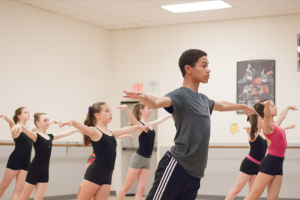
Kern Dance Alliance has officially become a chapter of the National Honor Society for Dance Arts with approval for a secondary program accessible to 9th-12th grade students studying dance who meet the requirements for induction. KDA seeks to ensure that excelling dance students within Kern County have every opportunity to grow and succeed. This means that students attending a high school without a dance program or whose high school or dance studio are not current chapters, can still be inducted through Kern Dance Alliance.
The National Honor Society for Dance Arts, or NHSDA is a program of the National Dance Education Organization whose mission is to recognize outstanding artistic merit, leadership, and academic achievement in students studying dance and to foster an appreciation for dance as a true art form. By recognizing these dance students nationwide, providing institutions with a way to promote their dance programs, NHSDA helps to advance the field of dance and the importance of dance education. This new KDA chapter comes to California on the heels of the passing of SB916 or TADA!, allowing high school dance and theater teachers to receive a credential with the potential to be highly qualified alongside their teaching colleagues. It is an exciting time for dance education in California and KDA is hoping to make Kern County dancers a part of it.
Dance students are inducted based on a “point system.” Points are awarded for dance activities such as dance classes, rehearsals, performances, research, workshops, or community service, alongside a GPA of at least 3.0. Dancers who are inducted receive recognition of their artistic merit, academic achievement, and leadership throughout their educational experience, certificates at each level of induction with the opportunity to wear the gold Honor Pin and blue and white Honor Cord with graduation gowns, mentorship from the KDA Chapter Sponsors and board members, networking with their peers, and have access to leadership and development opportunities within their NHSDA Chapter. Students will potentially have the opportunity to assist the KDA chapter sponsors with administration, record keeping, fundraising, and event planning as the chapter grows. Inducted students also qualify for the NHSDA National Merit, Leadership, and Academic Achievement Award, a scholarship award and the highest honor from the National Dance Education Organization.
9th-12th grade dance students who might be interested in the induction process should stay tuned for announcements from KDA beginning in the Fall through member email and social media. There will be an informational meeting soon and progress meetings throughout the year to ensure students who desire to be inducted are guided and mentored throughout the process. For more information about NHSDA, please visit www.nhsda-ndeo.org. KDA is thrilled to highlight the best and brightest dancers in Kern County.
Whether you are a dancer, studio owner or arts connoisseur, KDA is here for you.
- HOW TO GET A SCHOLARSHIP: If you’re interested in receiving a scholarship for your school, a workshop or even a summer intensive programs, KDA can help. We offer scholarships up to $500 – apply directly on our website – click here!
- HOW TO GET EVENTS POSTED: Studios, organizations and students are all able to have any and all events added to the KDA calendar! All you need to do is email fara@kerndance.org about your event, include all details and any image you’d prefer and it will be posted on the KDA calendar. FYI: in the near future, you will be able to post events yourself directly to KDA’s event page
- HOW TO FIND OR POST A JOB: On KDA’s site we have a job board that lists casting, employment and internship opportunities! To have something added to the job board, please email info@kerndance.org.
- HOW TO BECOME A MEMBER: Want to receive membership perks like tickets to great events? Want to be able to receive a scholarship? Want to collaborate and be involved with events that help arts and dance in our community? Want to be able to access all Kern County dance events in one place? It’s just $25/yr for individuals, $50/yr for organizations and $100/yr for venues. Become a member!
- HOW TO DONATE: Want to help KDA programming like the dance education and outreach program at The Fox Theater this fall? In November, KDA will host performance and dance classes for underprivileged children in partnership with Garden Pathways, The Boys and Girls Club and Bakersfield Homeless Center. Donate here or email us if you’d like to personally get involved!
- HOW TO SHARE WHAT KDA IS DOING: KDA would love you to share what we are doing! Follow us and share what’s going on – Twitter, Facebook, Instagram, and of course email links to our website or newsletter.
- HOW CAN KDA HELP YOU? If you want to collaborate, we have community connections and would be happy to help. Just shoot us a note and let us know what you as an individual or your organization needs help with, we will see what we can do!
